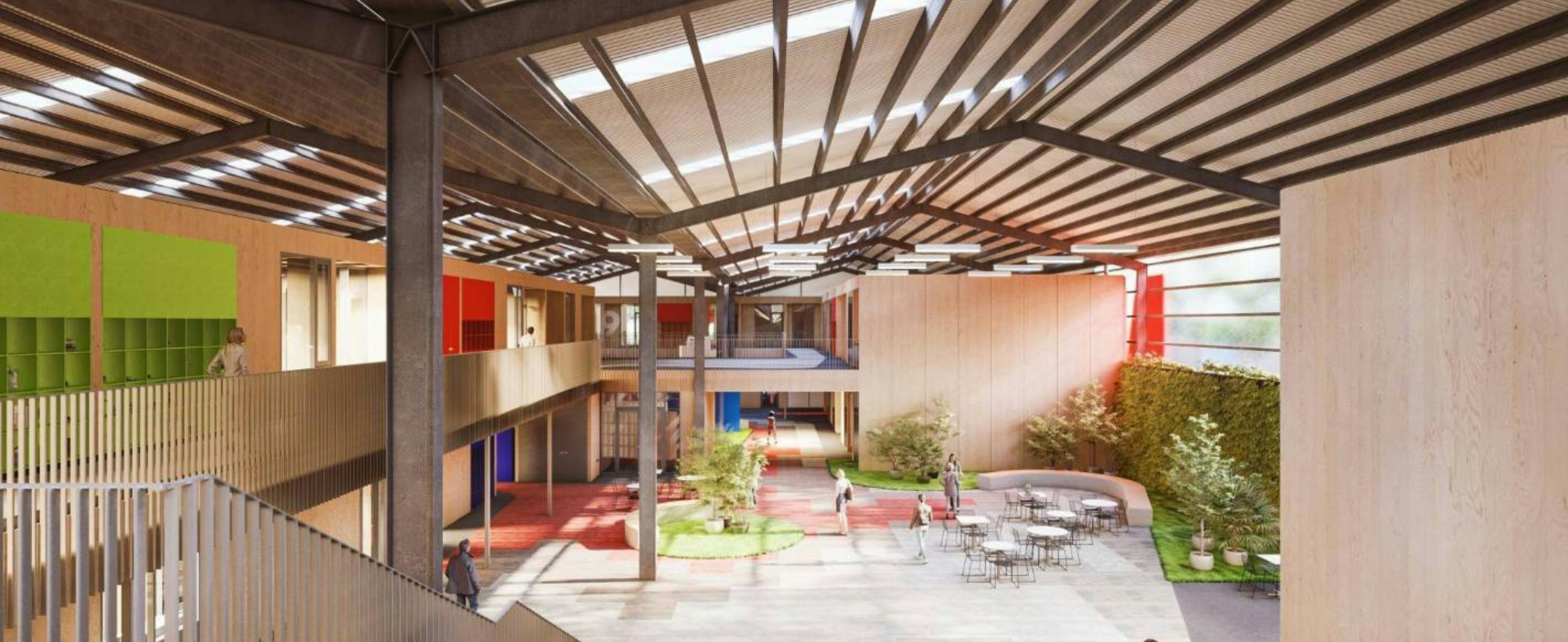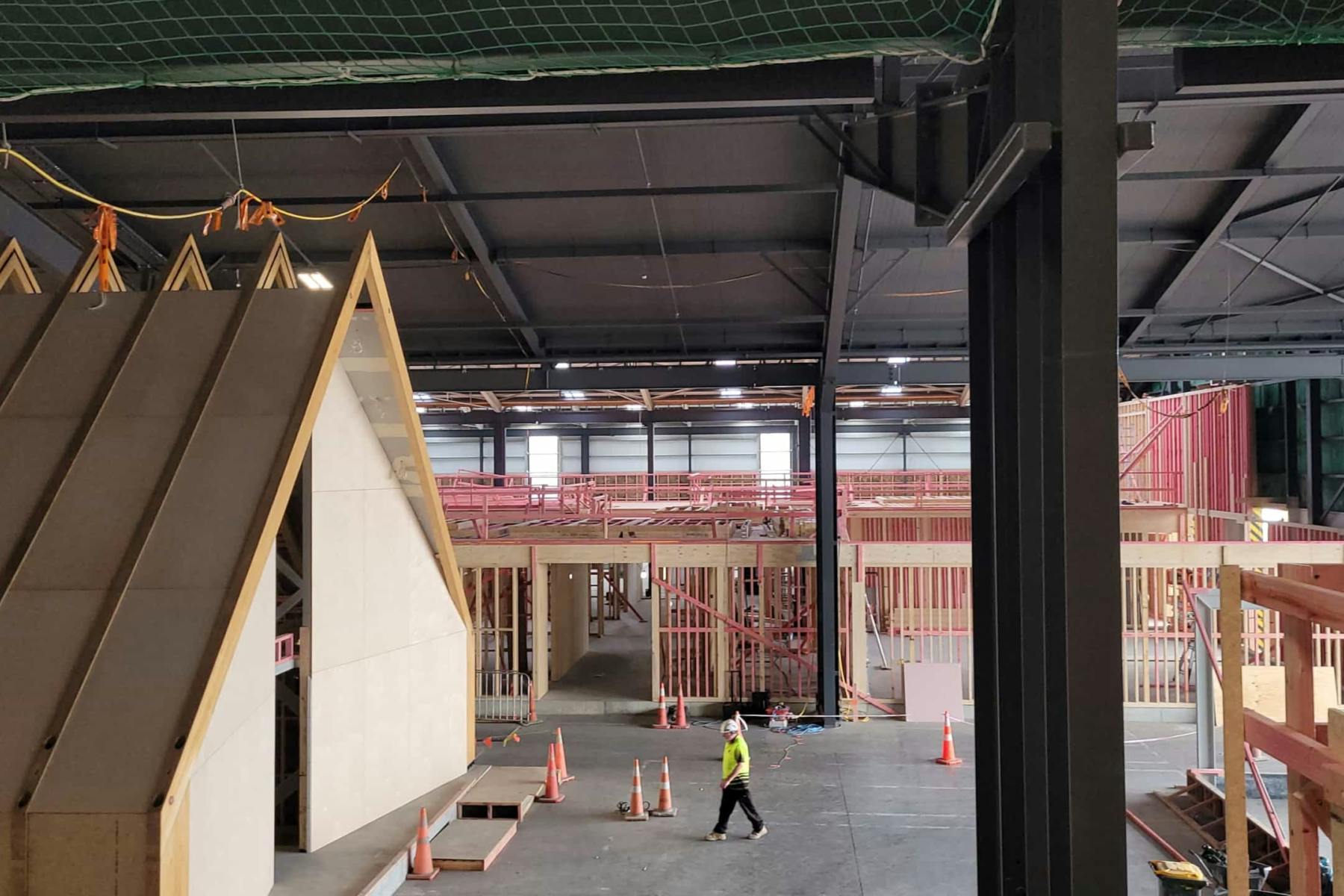Project summary
Project Detail
| Project | Marian College |
| Sector | Education |
| Location | Papanui, Christchurch |
| Total floor area (m2) | 13,000 sqm |
| Number of stories | 2 |
| Project completion date | Start of 2024 school year |
Project Team
| Organisation | Spokesperson | |
| Client | Catholic Diocese of Christchurch | Shaun Mitchell, Principal Project Manager |
| Architect | Sheppard and Rout Architects | Jonathan Kennedy |
| Engineers | Powell Fenwick Consultants | Isaac Williams |
| Contractor | Armitage Williams Construction | Damian Leary |
The lessons learnt
| Challenges | Solutions & Lessons | |
Client | 1. Site has an existing 1960’s era warehouse. What is the most efficient way to repurpose this structure. 2. A sustainability objective of achieving a 4-Star Greenstar rating with the school development on a very tight project budget. | Reuse almost all of the standing warehouse structure and design and construct new standalone building modules inside the existing structure. Maximised the use of Glulam, LVL, off-site fabricated Potius® roof and floor systems, as well as cost-efficient Strandboard linings enabled low embodied carbon in the build. |
Architect | 1. How to stretch a very tight budget as far as possible? 2. Long-span, open plan classroom format required. 3. Potential for unacceptable rain noise on existing warehouse roof and noise minimisation between classrooms. | Retain and fully repurpose the existing structure, with new buildings located under the existing roof envelope. Resulted in significant cost savings on external cladding. Potius® panel systems incorporating cross-banded LVL box beams enabled the cost-efficient long spans required to achieve the open plan format. Good acoustic modelling & placement of acoustic absorbing materials between roof purlins and designed with staggered studs between classrooms. |
Engineers | 1. Liquifiable soils meant potentially high foundation costs. 2. Brief required high sustainability credentials & appealing aesthetic. 3. Material supply delays and shortages. 4. Avoiding costs of complexity. | Use lightweight timber structural members and elements. Deploy timber wherever possible / feasible and expose as much timber as possible for a strong visual effect. Retain existing structures to avoid demolition and minimise waste. Worked very collaboratively with the Contractor to agree material substitutions as needed to avoid excessive construction delays. Wherever possible, avoid design solutions involving stepped diaphragms and misalignment of walls. |
Contractor | 1. Increasing use of BIM is good but does require that all disciplines include their overlays in the model. 2. The complexity of lifting large prefabricated timber panels and structural members into position in a height confined pre-existing structure. | Maximum advantage of use of BIM can only be realised if all overlays from all disciplines are included. This is required if the objective of no clashes and “get it right first time” is to be achieved. Insufficient height / space to operate traditional slew cranes. Use of Hiab units was the solution, but the additional expense associated with this needs to be accounted for early on. |


